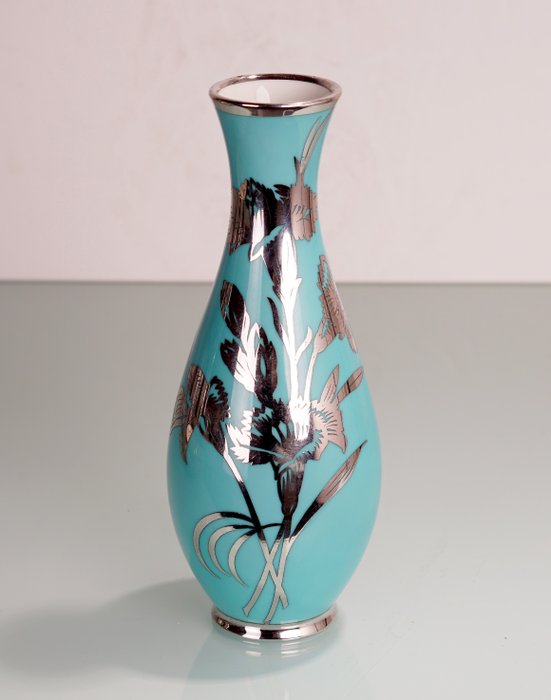
claire debril - virebent - Vase - Porcelain
No. 35642885

No. 35642885

Porzellfabrik Hertel, Jacob & Co. G.m.b.H. (1913 -1979).
Very decorative, Hertel, Jacob & Co turquoise vase with silver overlay and with a rhodium layer.
Rhodium is a clear, glossy chrome-coloured transition metal used for finishing jewellery. White gold rings, especially for engagements and weddings are galvanised and thus refined.
The rhodium coating protects the silver from oxidation.
The vase is outstandingly marked on the bottom.
1000/1000 Feindsilber (Friedrich Deusch *).
Marked: ‘Porzellfabrik Hertel, Jacob Bavaria Germany’.
*
Friedrich Deusch used a red stamp with a coffee pot image and the name ‘Deusch’, and ‘1000/1000 Feinsilber’.
Friedrich Deusch, the inventor of the German silver layer, was born in 1855 in Pforzheim. He worked in Berlin in 1895 and started his experiments by researching methods to melt precious metal to glass and porcelain. His experiments started to bear fruit in 1907 and he won prestigious prizes on an exhibition in Bordeaux.
Deusch returned to Schwäbisch Gmünd in southern Germany, where he founded his company Deusch & Co. in 1912. Deusch continued to exhibit his work and won the gold medal on the World Exhibition of 1913 in Ghent, Belgium.
Located in Schwäbisch Gmünd, it became the centre of the German production of silver coating. Schwäbisch Gmünd (approx. 20,000 inhabitants at the time) had a long tradition of artists working with gold and silver since the 16th century. It already had a school for applied art, which became a school for the precious metal industry in 1907. Almost 190 companies were involved in the precious metal industry in the 1920s. The presence of materials, craftsmen and suppliers of components all took care of an ideal environment for the industry to flourish.
How to buy on Catawiki
1. Discover something special
2. Place the top bid
3. Make a secure payment